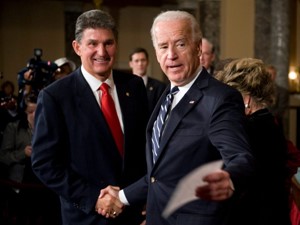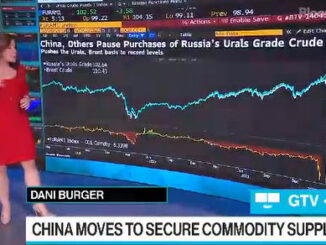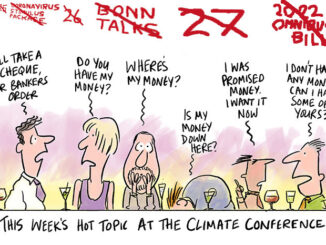
In an interview on Wednesday, the Bank of England’s chief economist Huw Pill said “[People] need to accept that they’re worse off and stop trying to maintain their real spending power by bidding up prices, whether [through] higher wages or passing the energy costs through onto customers.” Demands for higher pay were only “generating inflation” as a result, he said. Inflation at 10.1 percent was five times higher than the Bank of England’s 2 percent target in March.
At this point, one might ask, why didn’t the great economists of past generations think of Mr. Pill’s ‘tough love’ remedy: stop higher wage claims you working class folks, and as for you businessmen, stop passing on increased costs. Stop “generating inflation”. Alas, the BOE’s chief economist got one thing wrong. Workers clamoring for higher wages to keep up with higher costs of living and businessmen trying to pass on higher costs to their customers to keep their businesses running certainly accelerate inflation, but they aren’t “generating” it.
The late Nobel laureate Milton Friedman would have agreed: “Consumers don’t produce it. Producers don’t produce it. The trade unions don’t produce it. Foreign sheikhs don’t produce it. Oil imports don’t produce it. What produces it is too much government spending and too much government creation of money, and nothing else.”
Lenin’s Weapon Wielded
A quote attributed to Vladimir Lenin states that “The best way to destroy the capitalist system [is] to debauch the currency.” The quote was popularized in an essay on inflation by John Maynard Keynes, the influential British economist who played a key advisory role in the post-War Bretton Woods talks. Keynes wrote:
“By a continuing process of inflation, governments can confiscate, secretly and unobserved, an important part of the wealth of their citizens. By this method, they not only confiscate, but they confiscate arbitrarily…. Lenin was certainly right; there is no subtler, no surer means of overturning the existing basis of society than to debauch the currency. The process engages all the hidden forces of economic law on the side of destruction…”
Today’s wielders of Lenin’s weapon of currency debauchment come from ruling parties, across the ideological spectrum, in modern Western liberal democracies. The tragic flaw in Keynesian-inspired macroeconomics was the presumption that economic policy was conducted by a small group of wise and enlightened technocrats who acted selflessly for the public interest. The more plausible premise in liberal democracies is that governments formulate policies to win elections, rather than win elections to promote societal well-being. The norm that public budgets should be in balance, if not in surplus for a “rainy day”, and that deficits were to be tolerated only in exceptional circumstances such as war or depression is practiced only in the breach.
Since 1971 when President Nixon abandoned the gold standard, with few exceptions both Democrat and Republican administrations, with the support of the House and Senate, have been spending, and printing money at unprecedented levels as if to fulfil Lenin’s means of destroying capitalism. The Biden administration took an already bloated federal budget – which under the Trump administration spent enormous sums in response to the covid lockdowns – and doubled down on spending even more. President Biden has now spent more in his first two years than President Trump did during his last two years at the height of the pandemic.
Double Whammy
In his second month in office, Mr. Biden signed the $1.9 trillion American Rescue Plan. That was followed by a $1 trillion bipartisan infrastructure law in November 2021, a $750 billion misnamed Inflation Reduction Act in August and a $1.7 trillion government spending bill in December. President Biden’s spending binge has wide-ranging beneficiaries. The American Rescue plan included direct payments of $1,400 to most Americans and extended $300 weekly boosts in unemployment payments. But outside of this general handout, the usual left Democrat constituencies enjoyed wage increases and various boondoggles. These include the teachers’ unions, other favoured unionized workers, indebted students but above all crony investors in green industries such as EVs, wind, solar and power storage technologies favored by Biden’s “whole-of-government” climate change priorities.
Biden’s inflationary binge carries a ‘double whammy’. Not only is there “too much government creation of money” on the demand side but the Biden administration has simultaneously stymied domestic oil and gas business on the supply side. On attaining office, President Biden issued a series of executive orders which revoked permits for the Keystone XL pipeline, suspended oil leasing in Alaska, halted oil and gas leases on federal land, and even invoked the Endangered Species Act to block energy resource development on private lands in the West. Furthermore, by promoting Environmental, Social and Governance (ESG) metrics, governments, central banks and leading corporations cooperated to increasingly curtail investments in the fossil fuels sector without making it an explicit policy that would require legislation.
The administration’s climate change imperatives added energy “cost push” to the excessive money supply’s “demand pull”. As the “master resource”, fossil fuels count for over 80% of global energy use and their costs feed into the final costs of transport, fertilizer (and hence food), heating and cooling, and every other good and service produced in the economy. Until renewable energy is ready for prime time (excluding nuclear and hydroelectricity, it accounts for only 7% of the world’s energy use), green inflation is here to stay.
In June last year, US inflation had hit a 40-year high. President Biden’s advisors blamed inflation on Covid, broken supply-chains, the Russian invasion of Ukraine, and corporate greed. It’s no surprise that printing money like a drunken sailor or driving energy prices higher with anti-fossil fuel regulations don’t rate a mention in White House communications.
Testing Lenin’s Thesis
If the deterioration of government finances has been gradual since President Nixon’s presidency (when the federal debt to GDP ratio was around 35%), it has become suddenly exponential. US national debt recently topped $31 trillion for the first time in U.S. history, just eight months after it crossed $30 trillion. After peaking at 134 percent of GDP in the second quarter of 2020 amid the Covid lockdown-induced recession, US federal debt was at 120 percent of GDP in the fourth quarter last year. This debt milestone was set amidst historically high inflation, rising interest rates and growing economic uncertainty.
It is, as they say, not too late. If the US government pulls back from excessive budget deficits, stops pursuing extravagantly expensive climate policies that don’t add to productive capacity, eases the regulatory chokehold on fossil fuels projects and brings down energy prices, economic growth can be restored and inflation tempered.
Will the loss of confidence in the US dollar be gradual then followed by a sudden loss in the “full faith and credit” of the Federal Reserve in US debt markets? Let’s hope that Lenin’s thesis will not be seriously tested by the continued tendency of Western liberal democracies towards debt-financed government spending together with higher energy prices driven by their green agendas.



